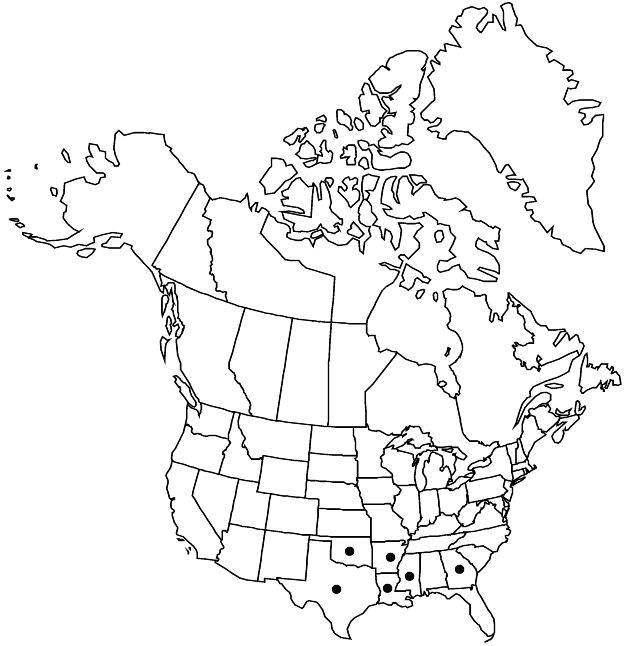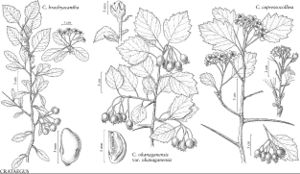Difference between revisions of "Crataegus brachyacantha"
Bot. Gaz. 7: 128. 1882.
FNA>Volume Importer |
FNA>Volume Importer |
||
| Line 13: | Line 13: | ||
}}{{Treatment/ID/Special_status | }}{{Treatment/ID/Special_status | ||
|code=F | |code=F | ||
| − | |label= | + | |label=Illustrated |
}} | }} | ||
|basionyms= | |basionyms= | ||
| Line 42: | Line 42: | ||
-->{{#Taxon: | -->{{#Taxon: | ||
name=Crataegus brachyacantha | name=Crataegus brachyacantha | ||
| − | |||
|authority=Sargent & Engelmann | |authority=Sargent & Engelmann | ||
|rank=species | |rank=species | ||
| Line 56: | Line 55: | ||
|publication title=Bot. Gaz. | |publication title=Bot. Gaz. | ||
|publication year=1882 | |publication year=1882 | ||
| − | |special status=Endemic; | + | |special status=Endemic;Illustrated |
| − | |source xml=https://jpend@bitbucket.org/aafc-mbb/fna-data-curation.git/src/ | + | |source xml=https://jpend@bitbucket.org/aafc-mbb/fna-data-curation.git/src/f50eec43f223ca0e34566be0b046453a0960e173/coarse_grained_fna_xml/V9/V9_843.xml |
|subfamily=Rosaceae subfam. Amygdaloideae | |subfamily=Rosaceae subfam. Amygdaloideae | ||
|tribe=Rosaceae tribe Gillenieae | |tribe=Rosaceae tribe Gillenieae | ||
Revision as of 22:44, 16 December 2019
Shrubs or trees, 60–100(–150) dm. Stems: trunk bark dark gray-brown, plated; thorns on twigs absent or present, recurved, short, to 1.5 cm. Leaves: petiole length 15–30% blade; blade elliptic, 2–3 cm, coriaceous, shiny, lobes 0, margins crenate, venation camptodromous, veins 5 or 6(–8) per side, abaxial surface glabrous, adaxial sparingly appressed-hairy, hairy on midvein, sometimes to sinuses. Inflorescences 15–25-flowered; branches glabrous; bracteoles caducous, narrow, small, membranous, margins eglandular, nearly glabrous. Flowers 12 mm diam.; hypanthium glabrous; sepals triangular, 1.5 mm; stamens 20, anthers cream to orange, 0.5 mm; styles 4 or 5. Pomes black to bluish black, pruinose, oblate-orbiculate, 8–14 mm diam.; flesh mealy; fruiting calyx suberect, on small collar, sepal tips often reflexed; pyrenes 4 or 5, dorsally slightly grooved, sides plane. 2n = 34, 51.
Phenology: Flowering Apr; fruiting Sep–Nov.
Habitat: Wet prairies, alluvial flats, well-drained mesic sites, woodland margins
Elevation: 10–200 m
Distribution

Ark., Ga., La., Miss., Okla., Tex.
Discussion
Crataegus brachyacantha occurs throughout Louisiana, where it is locally common, and in the adjacent parts of all surrounding states. A disjunct population was known in Georgia but it cannot be found there now. The species is seemingly more shade tolerant than many other hawthorns.
Crataegus brachyacantha is among the taller hawthorns in North America; its petals turn orange with age or on drying. The short, recurved thorns and bitter, oblate-orbiculate, black fruit also are distinctive and help to distinguish C. brachyacantha from C. saligna of Colorado and Utah (ser. Cerrones), which is similar in foliage and flower.
The names blueberry haw and pomette bleue may have a special appropriateness about late August when the waxy covering of the fruit is still thick and the underlying color is a dark purple. At maturity, the flesh is thin and bitter and the skin usually black. The fall foliage, brilliant lustrous orange, bronze, and red, suggests potential ornamental use. Forma leucocarpa Sargent is a white-fruited form, which was collected by E. J. Palmer at Natchitoches, Louisiana, September 1915; it is the only recorded white-fruited hawthorn.
Selected References
None.
